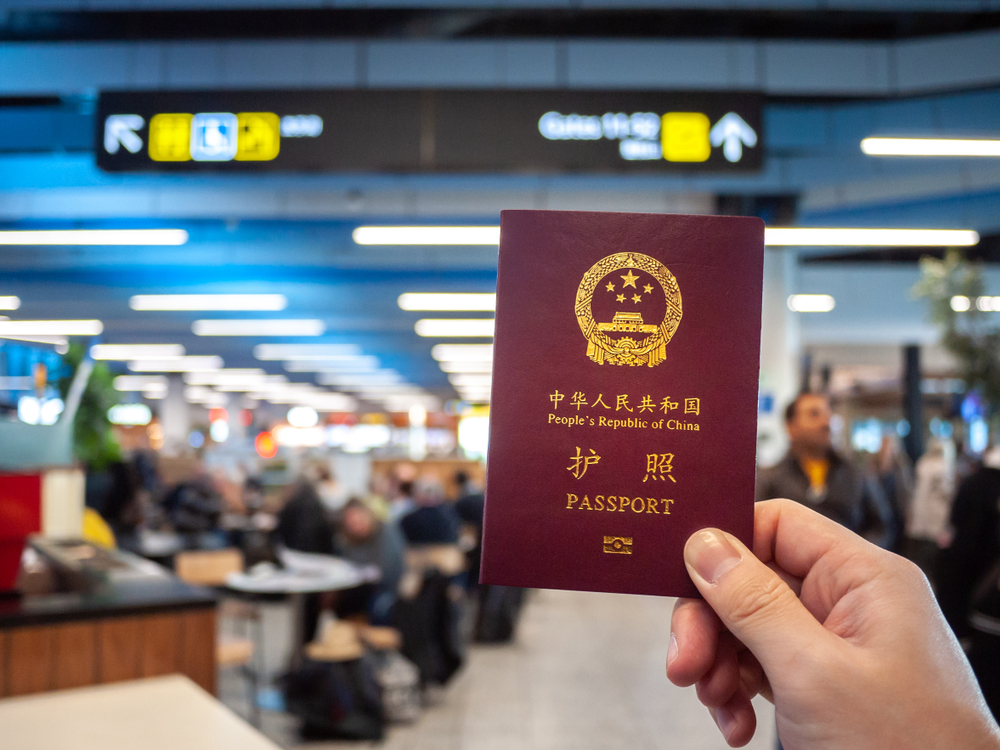The role of Overseas Chinese in the global markets (Pre-pandemic)
As China becomes a global power, it increasingly becomes a mobile nation. In 2019, 350 million cross-border journeys by mainland people and 98 million by foreigners reached a new high, extending a decades-long increasing trend that was only halted by China’s tough border controls in reaction to the COVID-19 outbreak. As China becomes a global power, it increasingly becomes a mobile nation. According to a survey by the Chinese Academy of Social Sciences (CASS), the number of overseas Chinese has hit 35 million, making them the world’s largest migrant population. According to the Report on International Politics and Security, abroad Chinese have lived and worked in 151 countries, with Australia, Europe, and North America being the most populous. Overseas Chinese typically work in the construction, farming, and deforestation industries, or own enterprises in retail, real estate, and importing.
In order to help stakeholders in tourism, e-commerce, investment, hotels, museums, etc., better comprehend the Chinese overseas Chinese market, STW Innovation Group has crafted this report with existing data analysis and comprehension of trends.
The Historical Context

Large-scale Chinese immigration abroad began in the late 16th century. By the beginning of the 17th century, there were more than 100,000 Chinese globally, mainly distributed in Southeast Asia. By the mid-19th century, there were about 1.5 million Chinese globally, and they were still highly concentrated in Southeast Asia. After the middle of the 19th century, large-scale Chinese laborers went abroad to change the distribution of overseas Chinese in the world fundamentally. In North America, Latin America, Oceania, and Europe, various Chinese communities became dominated by Chinese laborers.
Due to the exclusion of Chinese workers in countries and regions other than Southeast Asia in the late 19th century, the number of Chinese in the early 20th century were not as significant as those in Southeast Asia. By the early 1950s, there were about 12 to 13 million overseas Chinese worldwide. Since the 1970s, large-scale new Chinese immigrants have decisively changed the pattern of the concentration of overseas Chinese worldwide. By 2008, the total number of overseas Chinese in the world exceeded 45 million, while the proportion of overseas Chinese in Southeast Asia dropped to 73%, and the number of overseas Chinese in North America, Europe, Australia, Japan, and South Korea surged.
From the historical data, the distribution of overseas Chinese was on the rise, and more countries became involved. Therefore, overseas Chinese started building commercial value and influence locally. The data indicated that the primary purposes of overseas Chinese were studying abroad, immigration, tourism, and visiting relatives.
Chinese Studying Abroad

According to the ICEF monitor, a record number of Chinese students were studying for a degree abroad in 2021: a staggering 1,061,511. On top of that, another 200,000 students participate in exchange programs. China is the world’s largest sending nation in terms of student numbers. At this point, a total number of 1,061,511 Chinese students are studying abroad, according to the UNESCO Institute for Statistics. USA, Australia, and the UK are the most famous study abroad destinations today.
Chinese students take up a significant amount of the global education market and the pandemic has indicated risks of losing such a big share of international students that help universities all around the world grow. While such students spend most of their time studying, the value of cultural exchange and consumption of local offerings is one of the expectations that Chinese students studying abroad seek. That is why it is important for universities to open up more opportunities for students to connect with the region that they study in, allowing them to understand the tourism value and also build a closer connection to the region.
Chinese Migrants

In 2016, the number of Chinese students entering Europe surpassed those entering work and family reunification visas. More than 700,000 Chinese higher education students went abroad in 2019. In a new trend, so-called lifestyle migrants have also gone to Europe and elsewhere in Asia in search of warmer weather and a better quality of life. These migrants will be a key driver for the economy of the countries they visit. Such travelers not only make up part of the participants in the local economy at a higher level than students but also provide a framework for attracting future interest from Chinese in these specific regions.
Chinese travel platforms often work with select travel operators that only have a few listings for specific countries. This limit the reach of Chinese audiences to discover more local regions within a country as many locations are not listed for Chinese to travel to. This accessibility through content is key but with the rising trend of lifestyle migrants who are made up of independent travelers, content creators, and travel bloggers, destinations can optimize more diverse offerings through marketing strategies focused on such lifestyle migrants. As the content is being generated by the travelers themselves, it will help to attract future Chinese without the common issues with language & cultural barriers, and building up a marketing funnel from scratch.
Outbound Chinese Travelers

According to the data from Statista, international tourism spending of Chinese tourists from 2008 to 2019, the contribution of Chinese travelers to global tourism ranked first in the world. In 2019, Chinese tourists spent about 254.6 billion U.S. dollars while traveling abroad. On the other hand, the number of outbound visitor departures from China from 2010 to 2021 shows that China has undoubtedly become one of the driving forces in the global outbound tourism industry. In 2019, the number of outbound tourists from China reached nearly 155 million, almost three times as many as in 2010. However, the number of outbound tourists from China dropped to around 20.3 million in 2020 due to the coronavirus pandemic and was estimated to increase slightly in 2021.
While the current numbers are low, the market is awaiting the right time for the release of Chinese travelers worldwide. Meanwhile, there is still a substantial amount of other overseas Chinese that have been missed that could help bring a much more powerful strategic approach to amplifying the relevance of a destination for the potential travelers once China reopens.
Highlight
the world should not only focus on targeting Chinese travelers from China but also ethnic overseas Chinese
After decades of hard work by overseas Chinese, the overall economic strength has increased, and their image has also improved from the early working class to the middle and high-income class.
Chinese tourists have greater purchasing power than tourists from other nations, yet they can effectively encourage the growth of local tourism and the economic development of other sectors. However, in a relative sense, the overseas Chinese residents in the area are better for the growth of different sectors. With the education sector’s development, the quantity and quality of Chinese immigrants have gradually increased. The level of education is proportionally rising as more international students study abroad. The consumption power and job categories are not just restricted to that of the workers of the 1980s and 1990s.
However, with the increase in the number of high-quality new immigrants and the cultivation of their children by the old overseas Chinese, the number of practitioners in these industries is also increasing year by year, which has become one of the mainstream trends in the employment of new overseas Chinese and Chinese people. It is also the gradual integration of the Chinese into mainstream society’s important performance. Taking this into account, as well as the temporary consumption power brought by Chinese visitors, it is vital to pay attention to the long-term benefits that Chinese expatriates contribute to the local community and the short-term consumption passion they generate.
Conclusion
After the millennium, overseas Chinese also play an essential role in various countries. The number of overseas Chinese abroad is on the rise. Although COVID-19 has broken this situation, according to the pursuit of high-quality life and personal development opportunities of modern young people, they will still choose to go to different countries shortly to find a comfort zone.
Thanks for reading and stay tuned for our next report on the post-pandemic overseas Chinese impact!
Unlock New China for the Post-pandemic era

Entering the Chinese market takes time and extensive research as well as a deep understanding of consumer insights, trends, and local behaviors. Engaging in all these activities may be expensive and impossible for small to medium-sized businesses around the world. With the pandemic impact on the market, finding an efficient and cost-effective solution is vital to unlocking the potential of a newly opened Chinese market. However, finding partners that can digest both the international and local Chinese perspectives can be hard and risky.
Under the goal of connecting global cultures to the Chinese youth, Shake to Win has been facilitating China market access for SMEs, cultural organizations, as well as public institutions from all over the world, building commercial and emotional bridges between distinct nations and helping Chinese consumers to reach the most unique places, products, and people. We offer an extensive range of services including localization, social media, online marketing, offline campaigns, e-commerce, and more, leaving you to focus on your business without the need to learn Chinese from your local destination. For more information or business collaboration please contact, partnership@shaketowin.net.




